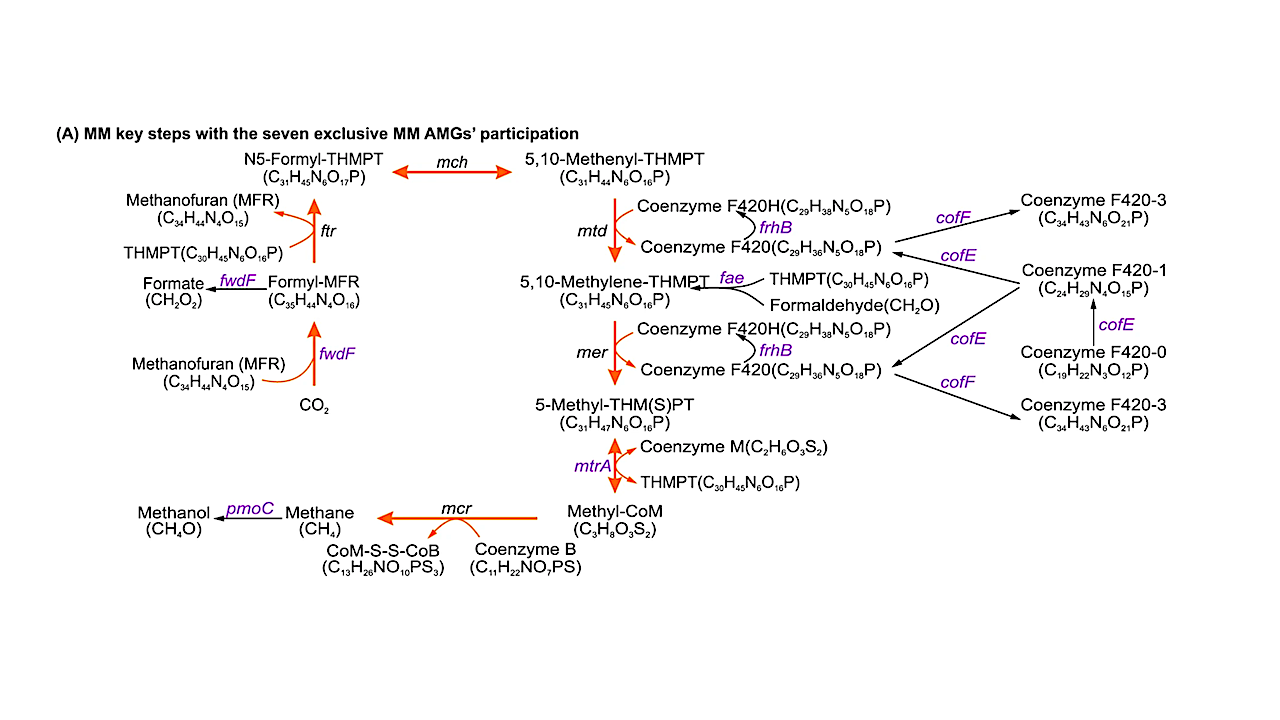Microbial Viruses Act As Secret Drivers Of Planetary Climate Change

In a new study, scientists have discovered that viruses that infect microbes contribute to climate change by playing a key role in cycling methane, a potent greenhouse gas, through the environment.
By analyzing nearly 1,000 sets of metagenomic DNA data from 15 different habitats, ranging from various lakes to the inside of a cow’s stomach, researchers found that microbial viruses carry special genetic elements for controlling methane processes, called auxiliary metabolic genes (AMGs). Depending on where the organisms dwell, the number of these genes can vary, suggesting that viruses’ potential impact on the environment also varies based on their habitat.
This discovery adds a vital piece to better understanding how methane interacts and moves within different ecosystems, said ZhiPing Zhong, lead author of the study and a research associate at the Byrd Polar and Climate Research Center at The Ohio State University.
“It’s important to understand how microorganisms drive methane processes,” said Zhong, also a microbiologist whose research examines how microbes evolve in diverse environments. “Microbial contributions to methane metabolic processes have been studied for decades, but research into the viral field is still largely under-investigated and we want to learn more.”
The study was published today (Feb. 29, 2024) in Nature Communications.
Viruses have helped foster all of Earth’s ecological, biogeochemical and evolutionary processes, but it’s only relatively recently that scientists have begun exploring their ties to climate change. For example, methane is the second-biggest driver of greenhouse gas emissions after carbon dioxide, but is largely produced by unicellular organisms called archaea.
“Viruses are the most abundant biological entity on earth,” said Matthew Sullivan, co-author of the study and a professor of microbiology at the Center of Microbiome Science at Ohio State. “Here, we expanded what we know about their impacts by adding methane cycling genes to the long list of virus-encoded metabolic genes. Our team sought to answer how much of the ‘microbial metabolism’ viruses are actually manipulating during infection.”
Though the vital role microbes play in accelerating atmospheric warming is now well-recognized, little is known about how methane metabolism-related genes encoded by the viruses that infect these microbes influence their methane production, said Zhong. Solving this mystery is what led Zhong and his colleagues to spend nearly a decade collecting and analyzing microbial and viral DNA samples from unique microbial reservoirs.
One of the most important places the team chose to study is Vrana Lake, part of a protected nature reserve in Croatia. Inside the methane-rich lake sediment, researchers found an abundance of microbial genes that affect methane production and oxidation. Additionally, they discovered diverse viral communities and uncovered 13 types of AMGs that help regulate the metabolisms of their host. Despite this, there isn’t any evidence that these viruses directly encode methane metabolism genes themselves, suggesting that viruses’ potential impact on the methane cycling varies by their habitat, said Zhong.
Overall, the study revealed that a higher number of methane metabolism AMGs are more likely to be found inside host-associated environments like the inside of a cow’s stomach, whereas fewer of these genes were found in environmental habitats, such as in lake sediment. Since cows and other livestock are also responsible for generating about 40% of global methane emissions, their work suggests the complex relationship between viruses, living beings and the environment as a whole may be more intricately tied together than scientists once thought.
“These findings suggest that global impacts from viruses are underestimated, and deserve more attention,” said Zhong.
Though it’s unclear whether human activities might have affected the evolution of these viruses, the team expects new insights gleaned from this work will raise awareness about the power of infectious agents to inhabit all life on Earth. Still, to keep learning more about these viruses’ inner mechanisms, further experiments will be needed to understand more about their contributions to Earth’s methane cycle, said Zhong, especially as scientists work toward ways to mitigate microbially driven methane emission.
“This work is a beginning step for grasping the viral impacts of climate change,” he said. ‘We still have lots more to learn.”
This work was supported by the National Science Foundation, the Croatian Science Foundation, the Gordon and Betty Moore Foundation, the Heising-Simons Foundation, the European Union and the U.S. Department of Energy. Co-authors include Jingjie Du of Ohio State, as well as Stephan Kostlbacher and Petra Pjevac from the University of Vienna, and Sandi Orlić from the Ruđer Bošković Institute.

A Schematic for viral participations in key MMP steps via encoding seven AMGs that exclusively participate in MMP. Viruses encoded seven AMGs (fwdF, fae, frhB, cofE, cofF, mtrA, and pmoC; as colored in purple text) to impact the key steps in both methane production and oxidation. The methanogenesis pathway from CO2 to methane is indicated by orange arrows. More information for 17 additional AMGs that could potentially participate in both MMP and other types of metabolism pathways is provided in Supplementary Figs. S1, S2, and Data 5. B Genome maps of three viral contigs carrying the AMG mtrA gene. The three viral contigs belonged to the same viral population (with 97.4–97.8% genomic identities among each other) and carried an identical mtrA gene. CheckV was used to assess host-virus boundaries and remove potential host fractions on the viral contig. Genes were marked by five colors to illustrate AMGs (purple), phage genes (orange), phage hallmark genes (blue), potential cellular genes (green), and hypothetical protein genes (grey). C Phylogenetic tree of the viral and microbial mtrA genes. The tree was inferred using the maximum likelihood method with protein sequences. Parametric bootstrap values (expressed as percentages of 1,000 replications) are shown at branching points. The scale bar indicates a distance of 0.1 substitutions per position in the alignment. The viral and microbial MtrA sequences are indicated in red and black, respectively. The numbers in parentheses indicate the number of protein sequences assigned to each group. The full phylogenetic tree (without collapsed groups) is provided in Supplementary Fig. S5A. The genomic maps and phylogenetic trees for the other six exclusive MM AMGs (pmoC, fwdF, fae, cofE, cofF, and frhB) are provided in Supplementary Figs. S3 and S5B–G. MM, methane metabolism; MMP, methane metabolism pathway.
Viral potential to modulate microbial methane metabolism varies by habitat, Nature Communications
Astrobiology, Climate Change,








